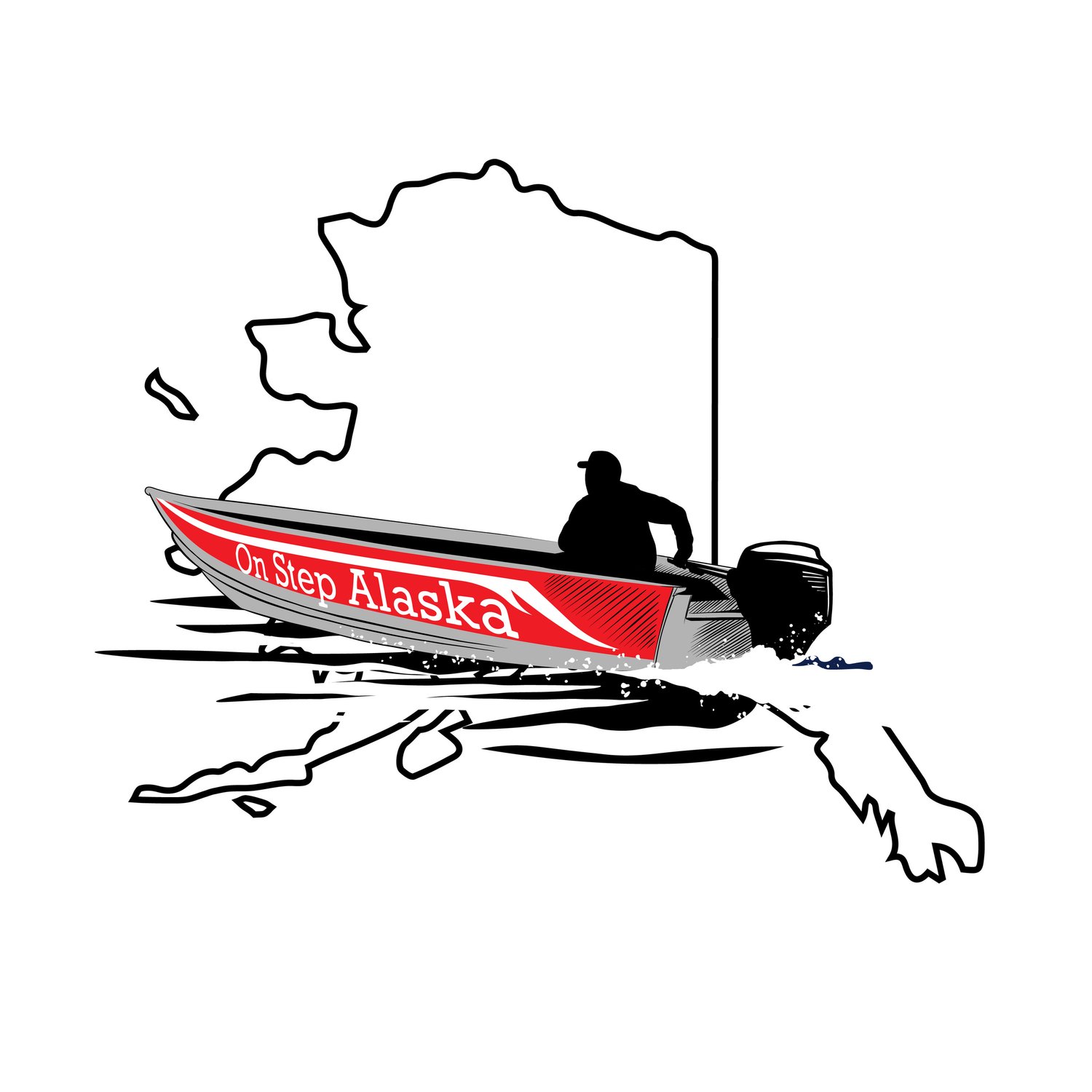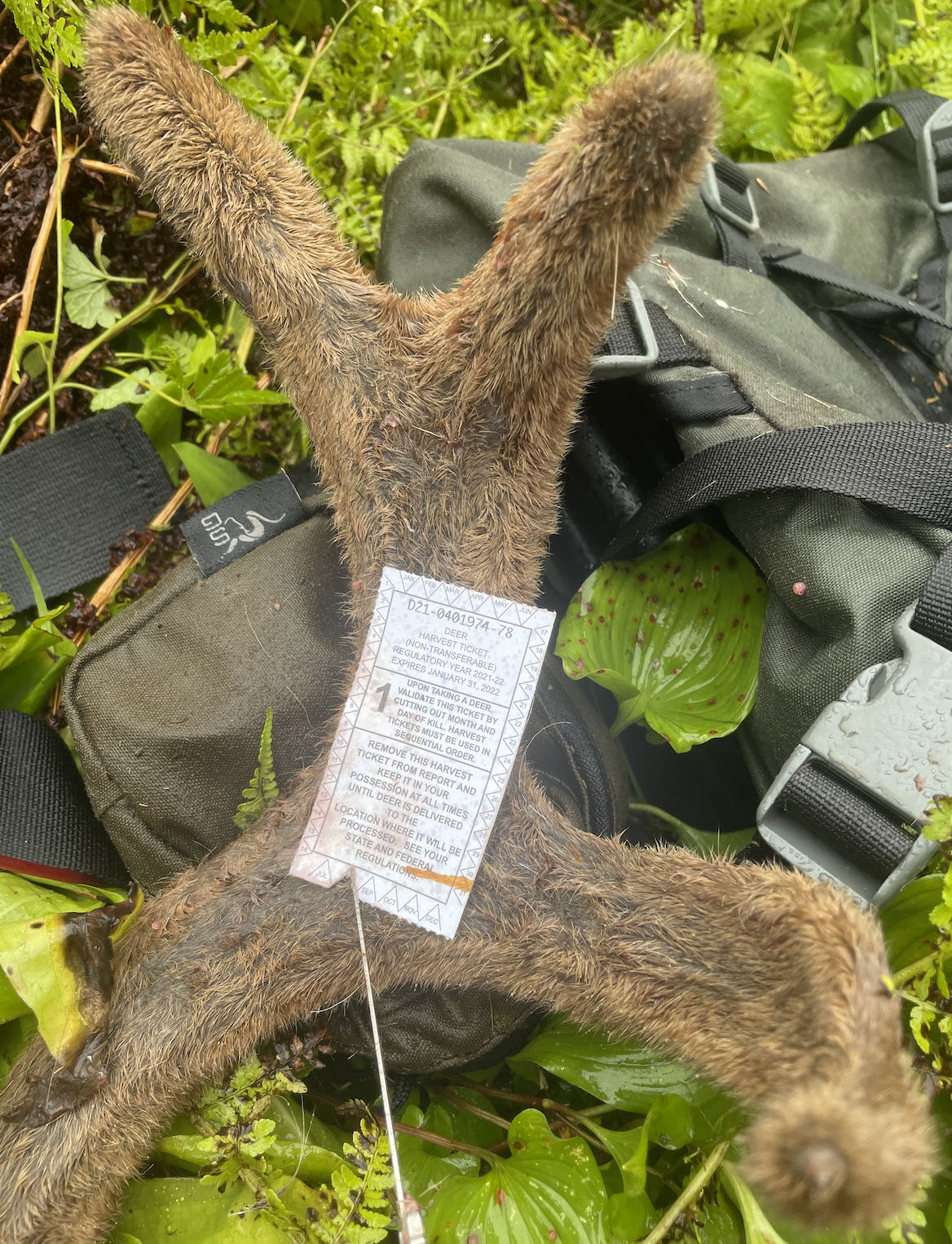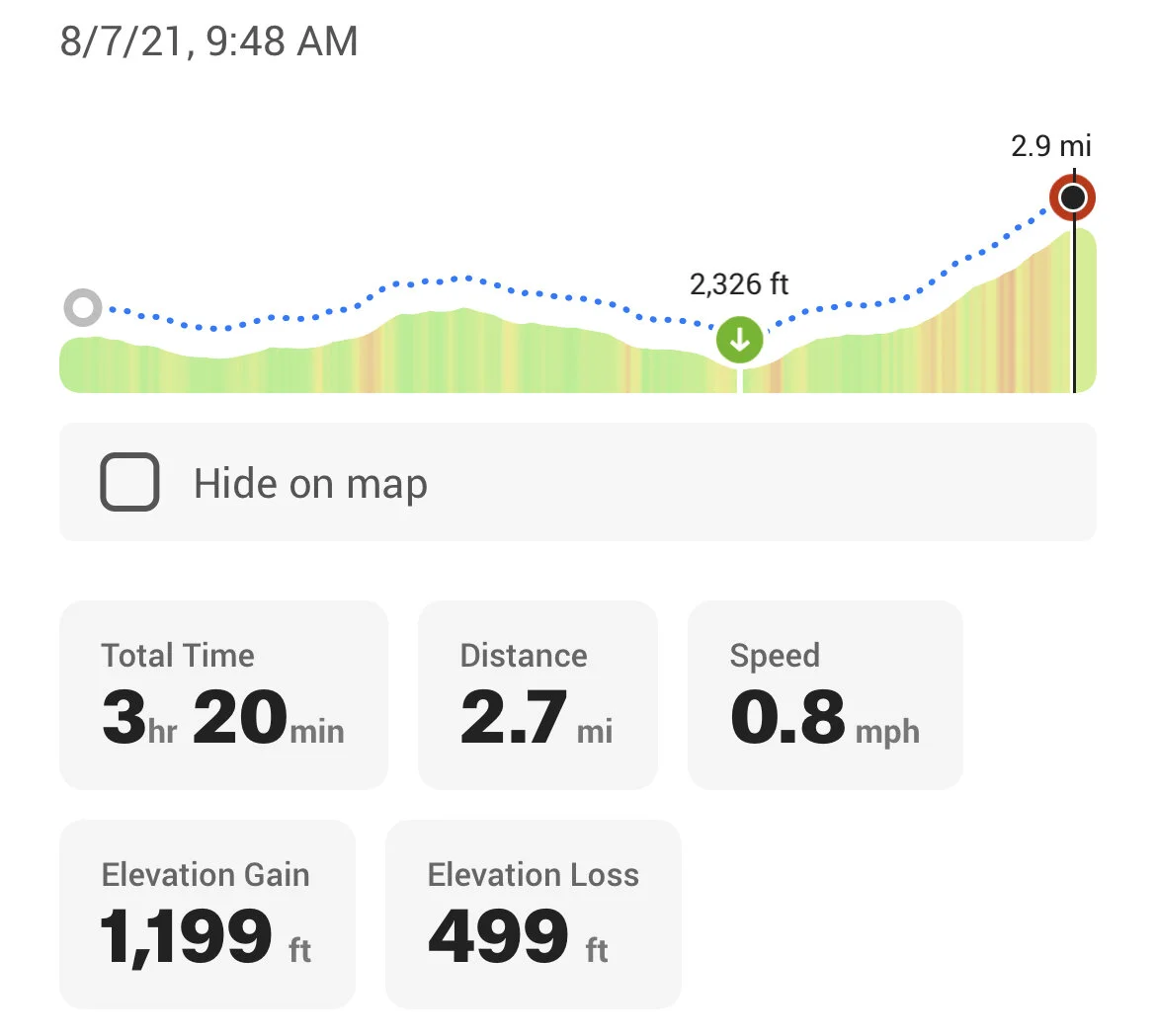Sitka Blacktail 2021
Opening Day
My “oh man, this is going to be awesome” face at 4:22 on the Opener.
The weather has been hot so the early morning was going to be the key. Bucks move early and bed once the sun even starts to get a little warm. Foggy mornings can provide dew which keeps deer out a little longer. So I thought everything was going to be perfect. The weather called for clouds and when I got out of the tent at 4:22, it was sunny up top, cloudy down below. I had just shy of a half mile climb to get to a vantage point of the bowl I wanted to hunt.
Fog was starting to roll in when I reached the cliff, looked into the bowl and saw a pair of deer. One was obviously a buck, but wasn’t very big. It turned a few times, but from 400 yards, I couldn’t tell if it was a decent forkie, or a really compact 3x3.
The wind swirled as I tried to work around to see the rest of the bowl and another little forkie popped up and started to follow the larger forkie across the bottom. They may have known something was up which was my fault for not doing a better job of concealing my movements. I wanted to get set for a shot and in my fumbling, I probably looked like something that might not be trustworthy. Even from 400 yards away.
I wasn’t too worried as they walked into the bushes. What was worrisome was the cloud cover. Fogged rolled in and sat. For two hours I hoped it would burn off, but it didn’t. It ended up not being fog, but actual cloud cover, just very low.
I got below the cloud cover, but by that time it was already turning hot and muggy. Bucks start to head into the shade by 6 or 7 depending on the heat, but by noon it was abundantly clear that it didn’t matter when the clouds went away, there would be nothing revealed on the landscape.
NOTE: Bucks can be shot on hot sunny days. My first 4x4 was at noon on a hot day a few years ago. I just happened to spot its bed which was just on the edge of alpine, but in a high density area on a chain with a ton of habitat. The edges where I started this season were scruffy and steep. No chance for that sort of flashback.
So I retreated back to my camp, packed up and headed off the mountain.
August 3 - Buck # 1
The weather turned which was good, meaning the cooler temperatures and rain would have bucks out feeding, maybe most of the day. Island bucks in Southeast Alaska don’t have the same migration needs as deer in the Lower 48. In fact, many bucks can stay put year round, so while the alpine can be a great spot to get an awesome buck that will eventually be pushed lower on the mountain thanks to weather, there are nice bucks that don’t leave the comfort of the lower timber and muskeg areas.
So I targeted a spot with a clearcut that had grown in to be a flourishing habitat. There were food and bedding spots so I figured it was a matter of finding the buck that was there. It’s the same idea when you’re glassing anything, right? It’s there, just find it.
A note about clearcuts. While clearcuts are flourishing deer habitats a few years after the cut, second-growth forests do not provide the warm and protection from winter like old growth. This is an essential element to the Roadless Rule and logging arguments in Southeast Alaska. Old growth timber is more valuable as a resource, but old growth forest is more valuable habitat for deer. So it’s a complex balance between habitat and the livelihood of residents.
While clearcuts are great places for deer, it can be very difficult to find them. In the case of my buck, I had walked past the deer and looked back into the clearcut I had passed and only then did I see him feeding in a small wrinkle. I set up for a shot, but the thing never came clear and looked like he went into a covered spot to bed.
I was 290 yards away and the wind was good, so I didn’t think I had spooked him, I just figured he was going to bed then get back up. It has been said that blacktail will bed for an hour or so, which convinced me it wouldn’t be a bad idea to walk further up the road just incase it had seen my movement and was nervous.
So after 30 minutes of hiking, I returned, and it was back out feeding and again never gave me a shot, and then disappeared. I had laid prone to get a shot and felt the water soaking through my Gore-Tex rain pants, so at this point I was absolutely soaked. I always carry a set of Hot Hands because even though it’s August, cold hands and hypothermia are possibilities when it’s 60 and rainy if you’re not moving. I put the hot hands in a pair of gloves and waited. There is sitting and waiting and there is sitting and waiting when it’s raining in Southeast Alaska. After an hour and a half, I was convinced there was a backdoor to where he was and he had escaped. If not, he was bedded in an area I wasn’t going to be able to find, so I made the decision to make a move.
I hiked through chest high blueberry bushes to get to a small knob that would provide me a view of exactly where the buck should have been. Being quiet in blueberry bushes is impossible, and with the rain it made me think very hard about the possibility of spooking a black bear.
I crested the knob and there was the buck, on the opposite side of what was clearly a great backdoor escape route from where he was earlier, but he hadn’t taken it. It was a clear view of danger in the area. With nowhere to lay, sit or kneel, I flipped open my scope covers to prepare for a standing shot. There were beads of water and a little bit of fog which is nearly impossible to prevent, even with the expensive brands. I squinted and instinctively moved my head forward a bit (you know where this is going) and fired. The bullet found the deer and the scope found my face.
The buck ran about 20 yards before collapsing. In front of me was a steep decline of berry bushes which I managed easily by sliding. It had been maybe 5 minutes since I watched the buck take the hit, run, fall, twitch and finally die. I came around the corner and saw a black bear moving toward the kill. I shouted, not as a strategic way of claiming the bear, but more out of reaction. The bear looked at me, then turned around. I stood about 20 yards from the kill, waiting to see what the bear would do.
I grew up in Southeast Alaska, so I have fished with black bears since I was 6 years old. That is not to say that I have lost respect or that I am an expert. However, a black bear is not a brown or grizzly, and after being in dozens of situations, even being bluff charged by one when I had salmon next to me on the bank of a river, I’ve seen how black bears act when they are not surprised. The bear’s initial response was to flee which meant that it wasn’t a sow with cubs that felt threatened. It didn’t defend a kill it had claimed or cached. It fled. When it reappeared, he was at a safe distance which again told me it was curious and wanted the deer, but wasn’t sure about what to do. I spoke loudly for a few minutes to the bear telling it I would leave the leftovers and the delicious guts for it. When it didn’t return, I deemed it safe to approach the kill and get to work. I sent a message each to 2 friends using my inReach to tell them the situation, and kept my inReach around my neck while I worked.
I gutted the deer and wanted to move it as to put some space between food the bear could have and meat I wanted, but the terrain was too slick and steep. So I left the bone in the legs and boned out the ribs and rest of the meat as quickly as possible while a mix of rock, rap and country played at full blast on my cell phone.
Hiking out of a clearcut is so miserable, some refuse to hunt clearcuts. Branches from de-limbed trees lay crisscrossed and provide excellent opportunities to twist an ankle, hit a shin or dislocate a hip. And that’s without a heavy pack. But halfway up my climb I thought about a podcast I did with Mike Merrill. I asked him why he always looked so happy when he was working out and he said he just enjoyed being able to work hard and test himself, even if sometimes it seemed like rather than “Keep Hammer” it seems like the situation was “hammering you.”
That made me laugh. I powered through and hiked back to the truck.
August 7 - Buck # 2
I would like to say that I spent eight hours in a tent reading a book, but the truth is we watched Netflix. After a boat ride and 7-mile hike (the last mile was a steep subalpine bog) the fog closed in, it rained, and there was nothing to do but wait. We ate, watched a movie Abby had downloaded for a flight and not watched, ate again then fell asleep.
We still had two miles to cover in the morning before we got to the final climb and where we thought the deer would be, so although it was still foggy, we went for it. This brings up a central debate. Do you move in the fog to cover ground, or do you stay put hoping not to bump anything? On our way down the ridge we saw a few small bucks, but nothing like what we knew this mountain would hold.
The weather cleared a few times for short glimpses but not long enough to really glass, so we continued up until we accessed the main ridge.
We stayed put and waited out of the wind for an hour, waiting to see the mountain beneath us. On a previous trip my buddy and I saw a few larger bucks bedded at the base of a rock cliff which provided them protection, so we positioned ourselves with an angular view of that cliff. Sure enough, when the weather cleared, there were two great bucks bedded.
With the wind just right, we plotted a stalk when the clouds provided. At 200 yards, I was set to pull the trigger, but the clouds moved in and covered the deer. We had looked at other possible options though, and knew that we would be able to close to another knob at the same elevation which would safely cut the distance. Roaming around a mountain in the fog can be veery dangerous, so it’s important to scout as much of the mountain as possible while you can see it so you’re not moving into a potentially dangerous position or one that doesn’t give you a shot. Being on the mountain last year helped me realize that there were pockets of texture that would provide good stalks, but also some dangerous cliffs.
Under the cover of fog, we retreated off our knob, looped up, then down into the dip between where we had set up and a closer knob. We popped up just in time to see nothing. There was nothing about our movement that made me think that the bucks had taken off, so I stayed patient and figured the buck had fed down into some of the texture of the mountain. Sure enough, it popped up and was walking toward us. I held on its chest and waited for a broadside shot at 100 yards. It turned and 1 shot dropped the buck.







